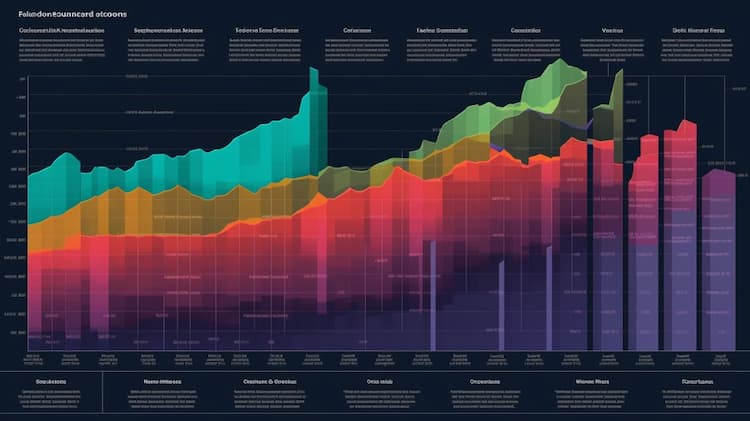EQOP ISSUER
The Natixis Funds' Equity Opportunities Fund (EQOP) follows a distinctive investment strategy. Under normal circumstances, the fund allocates at least 80% of its assets to equity securities, focusing on both exchange-traded common stocks and exchange-traded preferred stocks. Moreover, the fund dedicates 80% of its assets to securities of U.S. issuers. The EQOP employs a dual-subadviser approach, with Harris Associates managing the Large Cap Value segment and Loomis Sayles overseeing the All Cap Growth segment. Harris Associates emphasizes investments in larger-capitalization companies trading below intrinsic value, while Loomis Sayles pursues growth through sustainable competitive advantages and long-term structural growth drivers. Natixis Advisors typically allocates capital equally between the two segments but has the flexibility to adjust allocations based on market conditions. The fund employs a unique non-transparent ETF structure, disclosing a Proxy Portfolio instead of daily holdings to prevent market participants from exploiting its trading strategy. Despite the benefits of portfolio secrecy, potential risks include attempts to decipher the Proxy Portfolio and constraints on investment strategies due to regulatory limitations. It's important to note that the fund is actively managed and does not aim to track an index.
EQOP DIVIDEND
The EQOP Dividend, offered by Natixis U.S. Equity Opportunities ETF Fund, provides investors with a source of income through its dividend distribution strategy. While the primary objective of this ETF may not be income generation, it still offers dividends based on the performance of its underlying assets. Dividends from EQOP are typically distributed on a [frequency] basis and are subject to the dividend policies of the companies within the ETF's portfolio. Investors seeking both potential capital appreciation and dividend income may consider EQOP as a suitable investment option.
EQOP TRACKING
The EQOP (Equity Opportunities) Fund, managed by Natixis Advisors, is an actively-managed investment vehicle that distinguishes itself through a non-traditional approach to portfolio tracking. Unlike conventional exchange-traded funds (ETFs) that routinely disclose their daily holdings, EQOP employs a non-transparent ETF structure. Instead of revealing its actual portfolio on a daily basis, the fund provides information on a Proxy Portfolio, which serves as a substitute for portfolio transparency. The Proxy Portfolio, while containing some of the fund's holdings, does not disclose the entirety of the Actual Portfolio. This distinctive approach aims to keep the market price of the fund's shares closely aligned with the underlying net asset value (NAV) per share. However, the non-disclosure of daily holdings introduces challenges, as market participants may attempt to interpret the Proxy Portfolio to unveil the fund's trading strategy, potentially leading to adverse trading practices that could impact the fund and its shareholders. The EQOP's exemptive relief imposes restrictions on the types of securities it can invest in, posing potential constraints on its ability to implement certain investment strategies.
EQOP CORRELATION
he EQOP (Equity Opportunities) Fund managed by Natixis Advisors employs a unique investment strategy, and its correlation dynamics play a crucial role in understanding its performance. The fund's correlation with traditional benchmarks and indices is influenced by the distinct styles of its subadvisers, Harris Associates and Loomis Sayles, managing the Large Cap Value and All Cap Growth segments, respectively. Harris Associates focuses on larger-capitalization companies trading at a discount to intrinsic value, while Loomis Sayles pursues growth opportunities based on sustainable competitive advantages and long-term structural growth drivers. The combination of these styles within EQOP may result in a diverse correlation profile, potentially exhibiting a differentiated response to market trends. Additionally, the non-traditional and actively-managed nature of the fund, coupled with its non-transparent ETF structure, adds complexity to understanding its correlation dynamics. Investors should carefully assess these factors to gauge how EQOP's correlation behavior aligns with their overall investment objectives and risk tolerance.
EQOP SECTOR
The EQOP (Equity Opportunities) Fund, managed by Natixis Advisors, maintains a sector-agnostic approach, allowing for diversified exposure across a broad range of industries. The fund's investment strategy encompasses two distinct segments managed by subadvisers Harris Associates and Loomis Sayles. The Large Cap Value segment, overseen by Harris Associates, primarily targets larger-capitalization companies trading at a perceived discount to intrinsic value. Meanwhile, the All Cap Growth segment, managed by Loomis Sayles, focuses on growth opportunities across companies of varying sizes and industries. As a result, EQOP's sector allocation is dynamic and influenced by the individual styles and preferences of each subadviser. The fund's commitment to flexibility in sector allocation, combined with an actively-managed and non-traditional ETF structure, positions EQOP to adapt to evolving market conditions and pursue opportunities across diverse sectors. Investors seeking a well-rounded and adaptable investment approach may find EQOP's sector-agnostic strategy appealing for achieving broader market exposure.
EQOP EXPOSURE
The EQOP (Equity Opportunities) Fund, managed by Natixis Advisors, offers investors a unique exposure profile shaped by its distinctive investment strategy and dual-subadviser approach. The fund's exposure is predominantly to equity securities, with a minimum requirement of 80% of its assets invested in this asset class under normal circumstances. EQOP's investment approach combines the styles of its subadvisers, Harris Associates and Loomis Sayles, who respectively manage the Large Cap Value and All Cap Growth segments. Harris Associates seeks exposure to larger-capitalization companies believed to be trading at a discount to intrinsic value, while Loomis Sayles pursues growth opportunities across a diverse range of companies. The allocation policy adopted by the Fund's Board of Trustees, guided by Natixis Advisors, generally divides capital equally between the two segments, offering a balanced approach to exposure within the equity space. Additionally, the fund's non-traditional ETF structure, featuring a Proxy Portfolio disclosure instead of daily holdings, introduces a layer of uniqueness to its exposure dynamics, aiming to align market prices closely with the underlying net asset value per share. Investors considering EQOP should carefully evaluate its exposure characteristics, considering the fund's active management and innovative structure.



